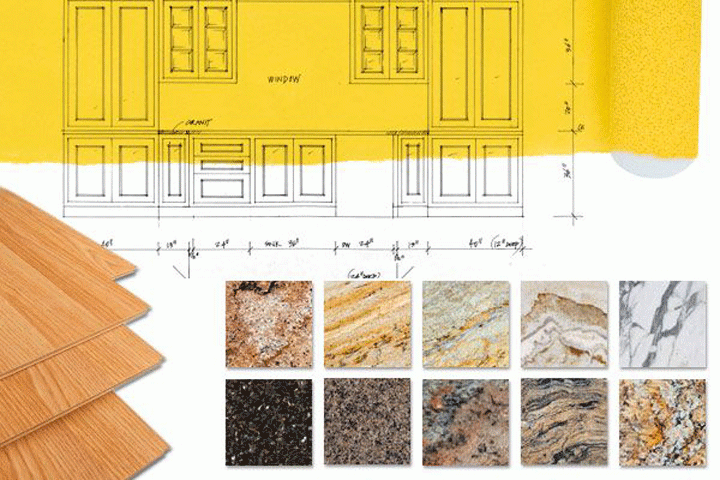
Natural stone comes in an endless variety of colors and choosing the right one can be a daunting task. Homeowners often want to match their new flooring and countertops to items they already own, or to their existing paint scheme. While this may sound like a logical approach, it's best to keep in mind that items can be always be moved, and paint is the quickest and least expensive way to completely change the look of a room.
It's best, when choosing something as significant as flooring or countertops, to reconsider the entire space. Think of it not concerning what it currently is and how you can fit the new colors into it, but of what space could be. After investing thousands of dollars into natural stone countertops, it is a small thing to repaint the walls, change the handles on the cabinet doors, or replace a white microwave with a stainless steel one. Reinventing your space, instead of retrofitting it, may be intimidating at first, but when you take this approach, you will end up with a much more cohesive and professional look.
[get_quote]
Colors play a dramatic role in setting the mood of a room. As a general rule, cool colors (blues and greens) tend to make a room feel more spacious and formal, while warm colors (reds, yellows, and browns) lend a cozy feeling.

Consider not only the color of the paint and stone, but the light which enters the room. If it is a north-facing room, it will tend to feel “cooler” simply because of the natural light, as will rooms which face east. South- and west-facing rooms will feel warmer. This light can be balanced by choosing colors on the opposite side of the spectrum. If your living area faces west and receives the yellow and red light of the last half of the day, but you desire a more sophisticated look, choosing paint and stone with green or blue tints will help bring it into balance.
For most rooms, though, start by choosing the color of stone that you love. Don't worry about how it will fit into the room. You'll worry about fitting the room to the stone later. Choose a stone that you think is beautiful, regardless of whether it matches the color of your cabinets or walls. You will be far more satisfied, in the end, by choosing a stone that you simply adore, rather than choosing a color or style because you think it will match.
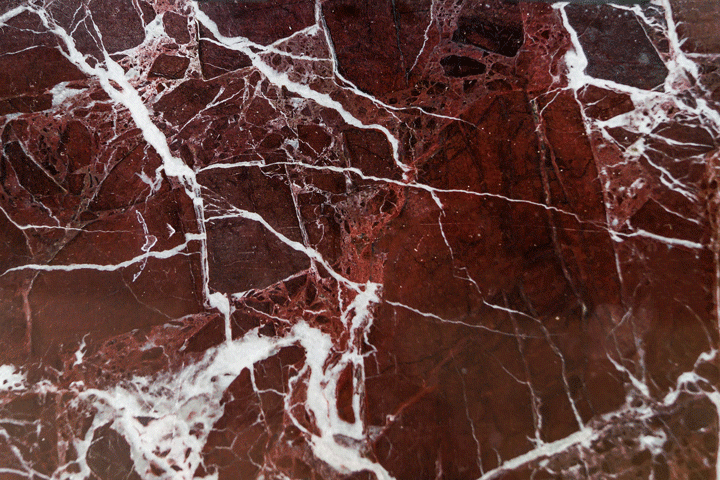
Once you've chosen your stone, imagine what colors will look best on the walls. Choosing a color within the same color family will help the room blend into itself, and the resulting uniformity will give it a comfortable feel. This is called monochromatic color theory, and it tends to create an atmosphere of coziness and quiet elegance.
Choosing colors adjacent to the stone's color on the color wheel is called analogous color theory, and is similar to monochromatic theory. It produces a subtle feeling, as long as one color (the walls, for example) is chosen as the dominant color, and the rest of the room (stone, floor, and accent pieces) are allowed to enrich the dominant color.
Choosing a complementary color scheme (colors opposite each other on the color wheel) will give the room a sense of motion and contrast. It looks best when the dominant color (walls and floor) is cool, and the accents are warm. Cool accents in a warm room tend to look awkward. Because of the strong contrast produced by a complementary color choice, many designers choose to use the colors just adjacent to the complementary color, rather than the complimentary itself. This can help soften the effect.
A triadic color scheme uses three colors spaced evenly apart on the color wheel. This scheme tends to make a room look harmonious, logical, and balanced.
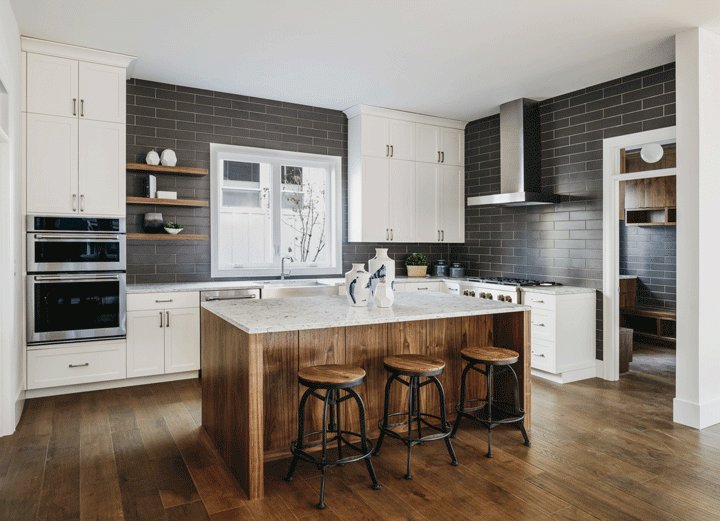
Because stone is a natural product, it will likely contain many colors in itself. This is especially true of slates and some granites. In these instances, it is quite permissible to draw the colors for the room from the palette of colors represented in the stone. Then, it is the stone that serves as the harmonizing factor in the room, and thus it becomes the focal point.
Some general rules of thumb for choosing shades of color (the lightness or darkness of a particular color) is that darker shades make a room feel smaller, and lighter shades make it feel larger. Dramatic changes in color value in different parts of a room can make its shape feel different. A kitchen with dark marble on the floor, but lighter walls and a white ceiling, will make the ceiling feel higher than it is. Conversely, dark colored walls with light travertine on the floor will bring the perceived height of the ceiling down, making the room feel shorter and smaller.
[get_quote]
Keep in mind that, when trying to choose a color shade to match your stone, even the smallest sample of natural stone will contain a wide range of colors. So don't fret for hours between Harvest Pumpkin and Autumn Umber. Likewise, taking a sample piece of stone to a paint store isn't always the best idea. The marble tile you hold may have a much larger concentration of dark browns, while the tile in the box beneath it is almost entirely light.
Color theory can be intimidating for many people. Luckily, there are dozens of books available which can guide you through the process. If in doubt, consult an interior decorator. But rest easy… the most dramatic thing you can do to a room is changing the paint on the walls, and if you hate your first choice, you can always repaint. It won't cost much beyond your investment of time.













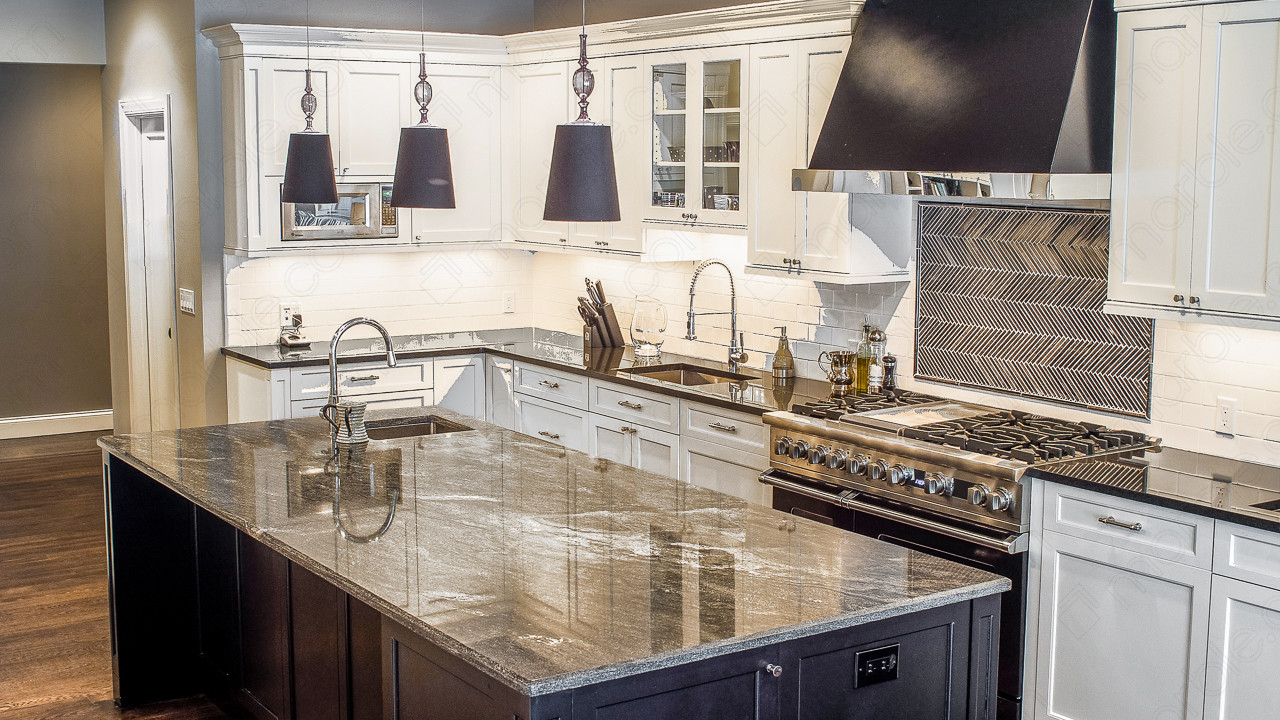
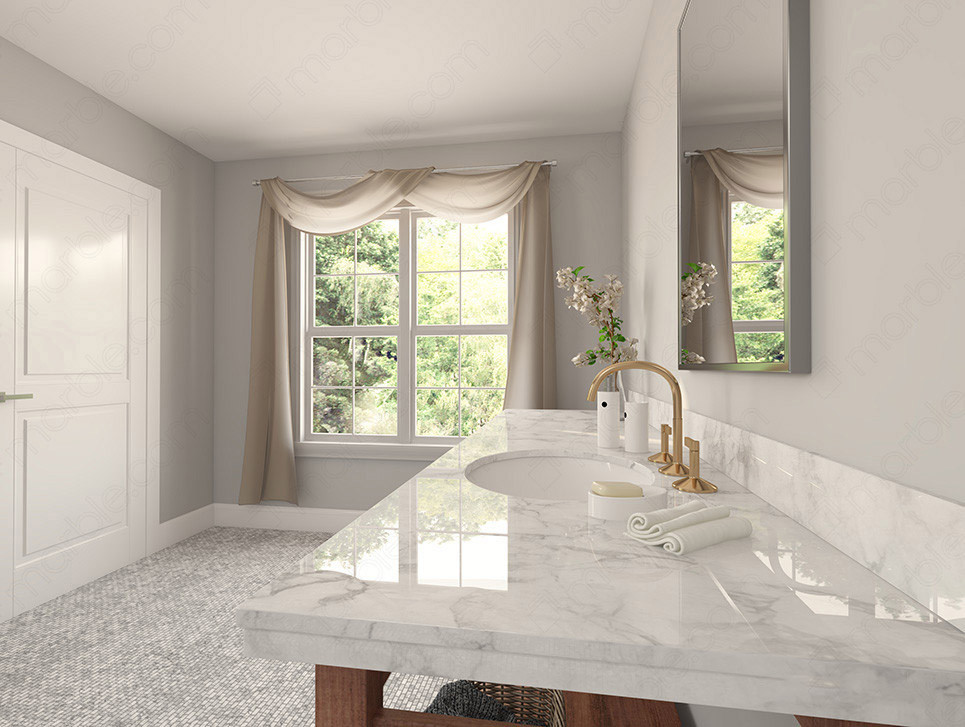
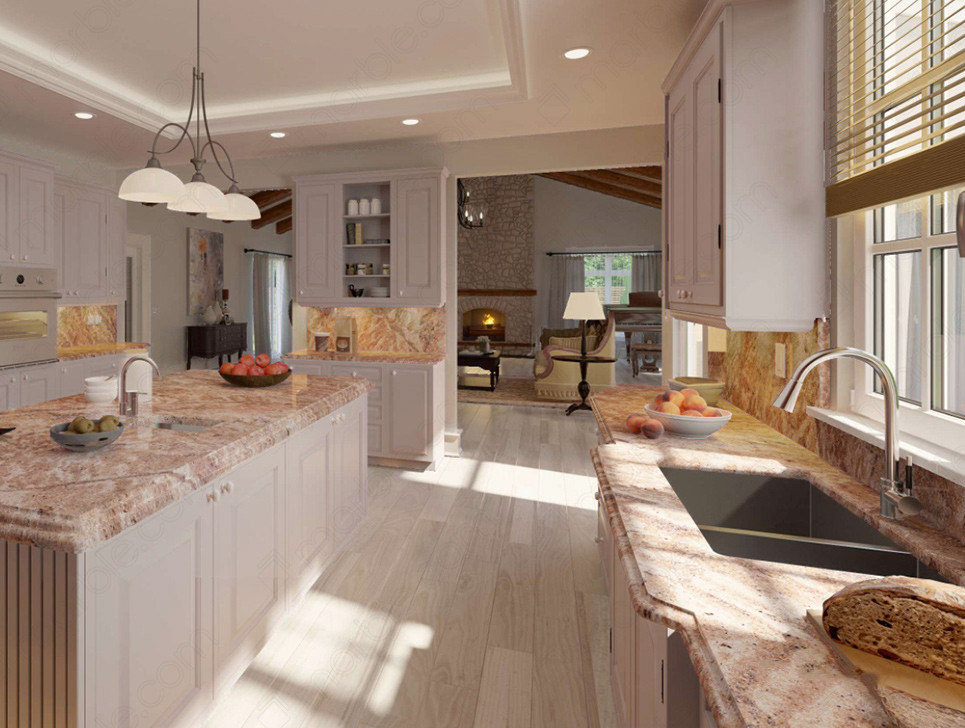
 The article helped me immensely
The article helped me immensely
 I’m now more informed on the subject
I’m now more informed on the subject
 I have questions about Marble.com
I have questions about Marble.com
 The article was not accurate at all
The article was not accurate at all
 There is a serious lack of information
There is a serious lack of information
 I have questions about Marble.com
I have questions about Marble.com